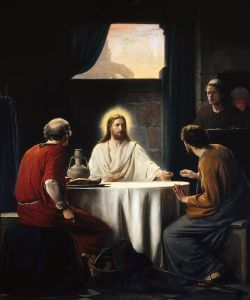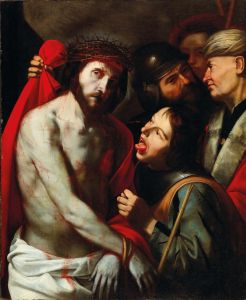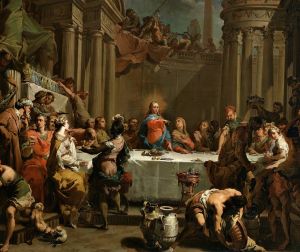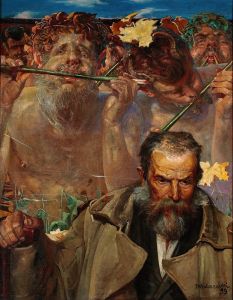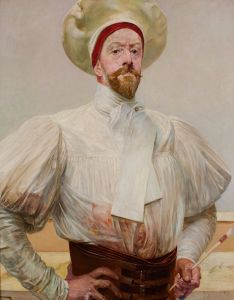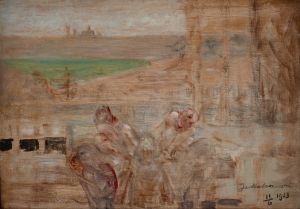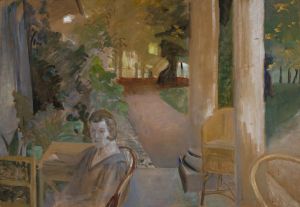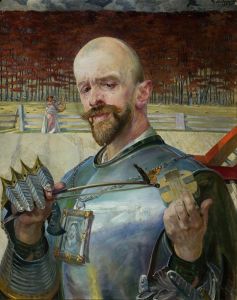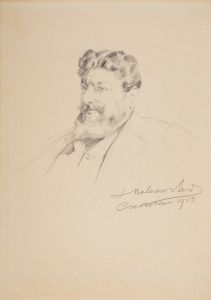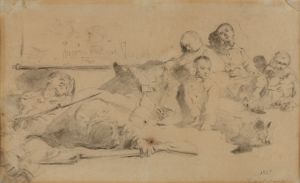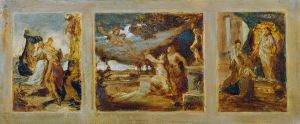
Christ in Emmaus – central section of the triptych
A hand-painted replica of Jacek Malczewski’s masterpiece Christ in Emmaus – central section of the triptych, meticulously crafted by professional artists to capture the true essence of the original. Each piece is created with museum-quality canvas and rare mineral pigments, carefully painted by experienced artists with delicate brushstrokes and rich, layered colors to perfectly recreate the texture of the original artwork. Unlike machine-printed reproductions, this hand-painted version brings the painting to life, infused with the artist’s emotions and skill in every stroke. Whether for personal collection or home decoration, it instantly elevates the artistic atmosphere of any space.
Jacek Malczewski, a prominent Polish Symbolist painter, created the central section of the triptych titled Christ in Emmaus as part of his exploration of religious and philosophical themes. Malczewski, known for his deeply symbolic and allegorical works, often incorporated elements of Polish history, spirituality, and national identity into his art. This painting is no exception, reflecting his characteristic style and thematic concerns.
The triptych's central panel depicts the biblical scene of Christ appearing to two disciples on the road to Emmaus, as described in the Gospel of Luke (24:13–35). This moment, where Christ is recognized during the breaking of bread, has been a popular subject in Christian art, symbolizing revelation and faith. Malczewski's interpretation of this scene is imbued with his unique artistic vision, blending traditional religious iconography with Symbolist aesthetics.
In the painting, Malczewski employs a muted color palette and a contemplative atmosphere, drawing the viewer into the spiritual and emotional depth of the scene. The figures of Christ and the disciples are rendered with a sense of solemnity and introspection, emphasizing the transformative nature of the encounter. The composition reflects Malczewski's skill in creating a balance between realism and symbolism, a hallmark of his work.
Jacek Malczewski was a leading figure in the Young Poland movement, which sought to rejuvenate Polish art and culture during the late 19th and early 20th centuries. His works often addressed themes of national identity, spirituality, and the human condition, resonating deeply with the cultural and political climate of his time. While Christ in Emmaus is primarily a religious work, it can also be interpreted within the broader context of Malczewski's artistic and philosophical concerns.
The triptych format, with its three-panel structure, has a long tradition in Christian art, often used to convey complex narratives or theological ideas. In Malczewski's hands, this format allows for a multifaceted exploration of the Emmaus story, though the details of the side panels are not covered in this description.
Christ in Emmaus exemplifies Malczewski's ability to merge personal vision with universal themes, creating a work that is both deeply rooted in its cultural context and accessible to a wider audience. The painting remains an important example of his contribution to Polish Symbolism and religious art.





